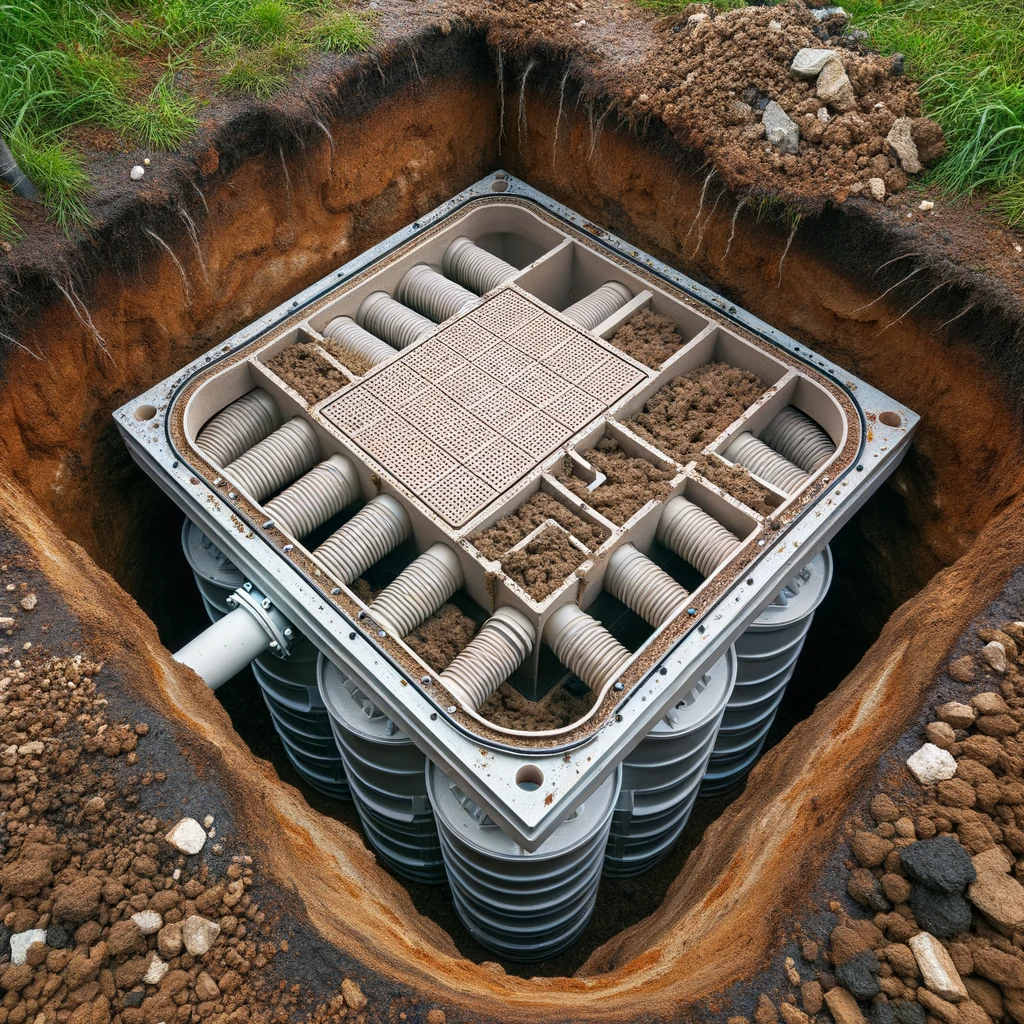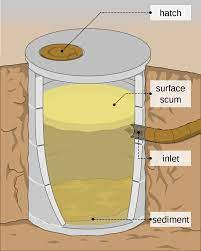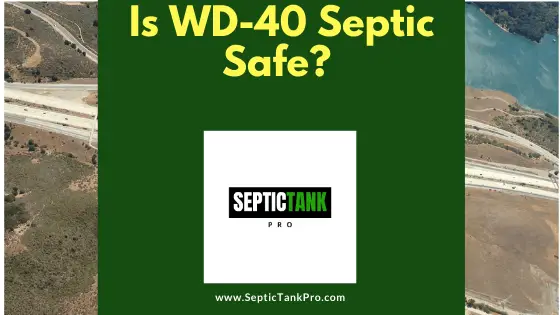The Complete Guide to Septic Tank Distribution Boxes
Septic tank distribution boxes, also known as D-boxes, are a crucial component of any septic system installation. This comprehensive guide will explain what they are, how they work, why proper distribution is important, signs of a failing D-box, and steps for inspection, maintenance, and replacement.

What is a Septic Distribution Box and How Does it Work?
A septic tank distribution box, or D-box, is a junction box that connects the outlet pipe from the septic tank to the multiple distribution pipes heading to different sections of the drain field.
The distribution box serves to evenly divide and distribute the effluent exiting the septic tank to the entire drain field. When wastewater enters the box from the septic tank, it flows out through the multiple openings and into distribution lines that lead to designated areas of the leach field.
Proper distribution ensures no single area becomes overloaded, preventing early failure and costly repairs. Even distribution allows the full drain field to filter and absorb liquids and particulates, protecting groundwater.
Call Septic Service Pros 1.855-925-0760 For Service or Request a Quote
Why is Proper Distribution Critical for Drain Fields?
Even distribution of septic tank effluent is critical to maintain the proper functioning of the drain field and prevent premature failure of the system.
Overloading
If effluent is not divided evenly, some areas of the field receive excessive liquid. Excess moisture saturates the soil, reducing its ability to filter out toxins and killing bacteria needed for processing waste. Overloaded areas can become waterlogged, severely damaging drainage capacity.
Clogs and Blockages
When sections are overloaded, solid materials can accumulate and clog distribution lines. Blockages force effluent to backflow into the tank or pool on the surface. Standing water poses a major public health risk.
Odors and Contamination
Insufficient drainage allows sewage to stagnate and emit foul odors. Without proper percolation, pollution leaches into groundwater supplies. Nearby wells and ecosystems become contaminated with bacteria, viruses, and nitrates.
Premature System Failure
A drain field that becomes nonfunctional or saturated with effluent will no longer absorb and treat waste. The system will fail and require replacement of the entire leach field, an extremely expensive repair.

Call Septic Service Pros 1.855-925-0760 For Service or Request a Quote
Signs Your Distribution Box Needs Replacement
Several clear warning signs indicate when a septic distribution box is failing and needs replacement:
- Standing water or soggy soil above the D-box
- Strong sewage odors around the drain field
- Slow drainage from household plumbing fixtures
- Pooling effluent or muddy ground near lines
- Cracked or damaged distribution box
- Leaks at joints or corroded piping
- Unhealthy grass or plant growth in the leach field
- Blocked distribution lines or backups
If you notice any of these issues, contact a septic service professional immediately to inspect the D-box and drainage system. Waiting risks overloading the drain field and resulting in a complete system failure.
How Often Should D-Boxes Be Inspected?
Routine inspection and maintenance helps maximize the lifespan of your septic distribution box. D-boxes should be:
- Inspected every 3-5 years as part of a septic system checkup
- Inspected immediately if you notice signs of a malfunction
- Repaired or replaced as soon as issues are identified
- Maintained according to the manufacturer’s recommendations
Factors like high household water use, number of occupants, and age of the system may necessitate more frequent box inspections.
How to Inspect a Septic Distribution Box
Inspecting your distribution box is an important maintenance task that any homeowner can perform themselves. Follow these steps:
1. Locate the D-Box
Distribution boxes are installed close to the septic tank and drain field. Visible covers provide access. Use landmarks and plans to find the box if covers are buried.
2. Uncover the D-Box
Carefully clear away any soil or vegetation from the top and sides of the lid. Use proper lifting techniques and tools when removing covers to avoid injury.
3. Check for Leaks and Clogs
Inspect joints and pipes for water tightness and signs of leakage. Shine a flashlight inside the box to look for obstructions, blockages, or standing water.
4. Assess Structural Soundness
Check for cracks, damage, or deterioration that could allow effluent to leak out of the box. Ensure all pipes are properly aligned and secured.
5. Note Any Obvious Problems
Write down any issues found during inspection. Significant concerns should be addressed immediately.
6. Involve a Professional If Needed
If you are unsure about any findings, contact a licensed septic contractor to make a full assessment and recommend solutions.
7. Practice Proper Maintenance
Based on inspection findings, perform any necessary maintenance to keep the distribution box in good working order.
Replacing a Failing Distribution Box
If inspection reveals the septic distribution box is cracked, leaking, or otherwise failing, replacement will be required.
Professional Installation Recommended
Due to the complexity involved, it is highly advisable to hire a professional septic contractor to replace a distribution box. Improper installation can negatively impact system functioning.
Installation Process
- Locate existing D-box and excavate to expose
- Disconnect and remove old distribution box
- Install new distribution box in precise position
- Reconnect distribution lines to new box
- Securely seal all joints and piping
- Fill in excavation site and test flow to field
Choosing D-Box Materials
Septic distribution boxes can be made from concrete, polyethylene, PVC, or fiberglass. Your contractor will determine the appropriate material type based on site conditions and local regulations.
Frequently Asked Questions
What is the purpose of a septic distribution box?
To evenly split and distribute effluent flowing from the septic tank out to different sections of the drain field. This prevents overloading any single area.
How does an improperly working D-box affect my septic system?
Issues like leaks, clogs, or blockages lead to uneven effluent distribution. This strains and damages the drain field, leading to expensive repairs or replacement.
How do I know if my D-box needs to be replaced?
Signs like standing water, foul odors, soggy soil, or plumbing backups indicate the distribution box is damaged or clogged. Replacement is required to fix the underlying issues.
What problems arise from improperly replacing a D-box?
Improper positioning or pipe connections will continue to cause uneven effluent distribution. Cracks or unsealed joints could lead to leaks and contamination.
Can I change the material of my existing distribution box?
Yes, you can replace an old D-box with one made of different material. Make sure to use only approved materials and have proper installation performed.
Why is routine inspection of a D-box important?
Catching minor issues early allows for quick repairs and prevents catastrophic field damage. Routine inspections ensure the distribution box continues working effectively.
Regular inspection and maintenance of your septic tank distribution box is essential to the health of your entire drainage system. Follow this guide to check your D-box properly and determine when replacement is required. Contacting a professional at the first signs of trouble can help avoid serious damage and expensive repairs.









